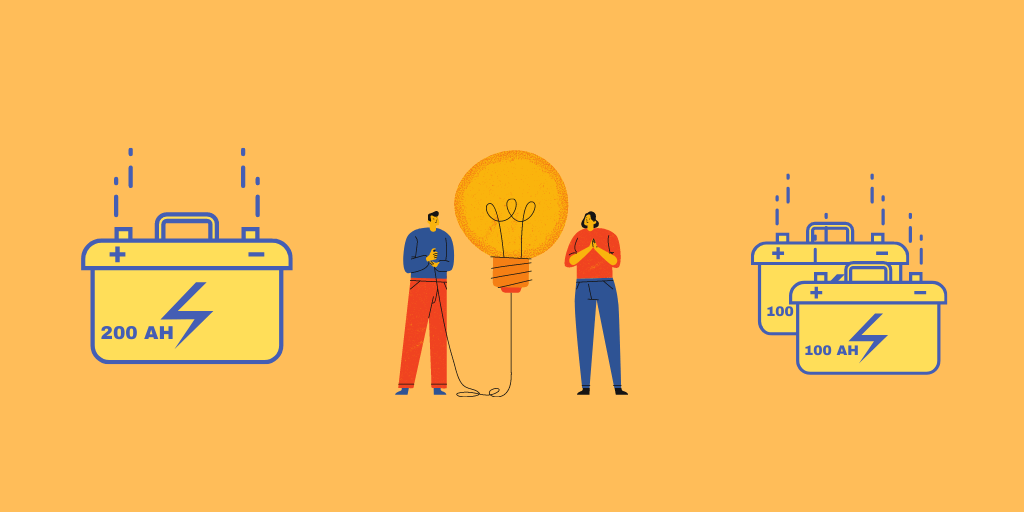Many of our solar friends ask me about using a single 200 AH battery or double 100 AH (Parallelly-connected) batteries for their solar and inverter setups.
This is a tricky question with many answers. Let’s compare both side by side.

| Features | 1 * 200 AH Battery | 2 * 100 AH Battery |
|---|---|---|
| Maximum capacity | 200 AH | 100 AH (Parallel) / 200 AH (Series) |
| Maximum voltage | 12 V | 12 V (Parallel) / 24 V (Series) |
| Failure/issues | Whole unit fails. | One unit may work. |
| Mobility | Tough to lift and move. | Easy to lift and move. |
| Weight | More (Single unit) | Less (Divided in 2 units) |
| Cost | Less or same | Slightly more or same. |
Both the setup will have same ampere hours of capacity. But you have advantage of playing with higher voltage in 2 battery setup using series connection.
In single battery system, you are limited to 12V. While in 2 battery system, you can double the voltage, up to 24V and use bigger inverters for higher load, all you need to do is connect both the batteries in series and use 24V inverter.
Batteries never die easily unless it is harshly used or not maintained correctly. But in rare cases if the battery fails, chances are high that single battery will fail totally and dual battery system may be safe from a total failure.
Mobility of single battery is more of a headache as it is heavy and not easy to lift or move, while double battery is shorter and the weight is divided in two individual units that makes it easy to lift and move.
At last when we come to the cost, both way you are going to pay equal or slightly more or less. In India, many companies offer inverter batteries in competitive price so when it comes to cost everything is similar.
Conclusion
So, you have all the advantages and disadvantages of using single or double battery system, decide what would be better for your requirements.
Leave a Reply